What are the different types of clay used in pottery?
Clay is the very foundation of pottery, a medium that has been shaped and molded for thousands of years. Each type of clay brings its own unique characteristics and qualities, influencing both the **functionality** and **aesthetic** of the finished piece. Whether you’re a seasoned potter or just starting your journey into the world of ceramics, understanding the different types of clay is essential. This article explores the various types of clay utilized in pottery, detailing their unique properties, uses, and how they influence the art of ceramic making.
Earthenware is one of the oldest types of clay, known for its porous nature and vibrant colors. This clay is typically fired at lower temperatures, which makes it less durable than other types but also more accessible for beginners. Earthenware is commonly used for both functional and decorative pottery. Its ability to absorb water makes it ideal for flower pots and various kitchen items, while its rich colors can add a warm touch to any décor. What’s more, the texture of earthenware can vary significantly, allowing potters to create everything from rustic pieces to more refined works of art.
Stoneware is a durable clay that is fired at high temperatures, making it perfect for functional items like dishes and mugs. Its dense composition gives it a unique aesthetic that many potters and collectors appreciate. One of the standout features of stoneware is its non-porous nature, which means it can hold liquids without leaking. This quality makes it an excellent choice for dinnerware and bakeware. Additionally, stoneware can be finished with various glazes, allowing for endless creative possibilities. Have you ever noticed how some stoneware pieces seem to glow with a rich, earthy finish? That’s the magic of this versatile clay!
Porcelain is a fine, white clay known for its strength and translucence. Often used for high-end pottery, it requires precise techniques and high firing temperatures to achieve its desired characteristics. When you think of porcelain, you might picture delicate tea sets or intricate figurines. This is because porcelain can be crafted into incredibly detailed shapes while maintaining its strength. The process of working with porcelain can be a bit challenging, but the results are often breathtaking. It’s like painting with the finest brush on the canvas of clay!
Ball clay is a plastic and versatile clay, commonly used in combination with other clays to enhance workability. This type of clay is essential in producing porcelain and stoneware, as it helps to improve the plasticity and strength of the final product. If you’ve ever struggled to shape a piece of pottery, adding ball clay to your mix can make a world of difference. Think of it as the secret ingredient in a recipe that takes your dish from good to **great**!
Fire clay is a high-temperature resistant clay, often used in kiln linings and refractory materials. Its ability to withstand extreme heat makes it valuable in pottery and other applications where durability is crucial. If you’re planning to work with high-fire techniques, fire clay is an essential component in your toolkit. It’s like the steadfast friend who supports you through thick and thin, ensuring your creations can withstand the test of time.
Terracotta is a type of earthenware clay that is known for its reddish-brown color. This clay is often used for garden pots and sculptures due to its rustic appearance. The beauty of terracotta lies in its simplicity and the organic feel it brings to outdoor spaces. Imagine a vibrant garden filled with terracotta pots, each telling its own story through the wear of the elements. It’s a testament to how clay can connect us to nature!
Raku clay is specifically formulated for the raku firing process, which involves removing pottery from the kiln while hot. This technique creates unique surface effects that are highly sought after by collectors. The unpredictability of raku firing means that each piece is truly one-of-a-kind. Think of it as a dance between the clay and the fire, resulting in spectacular finishes that can’t be replicated. It’s a thrilling experience that every potter should try at least once!
Paper clay is a unique blend of clay and cellulose fibers, allowing for enhanced flexibility and strength. It is especially useful for sculptural work and repairs, as it can be easily molded and shaped. If you’ve ever tried to fix a broken pottery piece, you’ll appreciate the magic of paper clay. It’s like having a reliable partner who helps you mend what’s been broken, bringing new life to your creations.
Different stoneware clay bodies can vary in texture and color. Understanding these variations helps potters choose the right type for their specific projects and desired outcomes. It’s essential to experiment and find what works best for your style. After all, pottery is about exploration and creativity. So, why not take the plunge and discover the perfect clay body for your next masterpiece?
1. What type of clay is best for beginners?
Earthenware is often recommended for beginners due to its ease of use and forgiving nature.
2. Can I mix different types of clay?
Yes, mixing different clays can enhance the properties of your work, but be mindful of their firing temperatures.
3. What is the difference between stoneware and porcelain?
Stoneware is more durable and non-porous, while porcelain is finer and often more delicate.
4. Is raku firing safe to do at home?
Raku firing involves high temperatures and smoke; therefore, it’s essential to follow safety precautions and work in a well-ventilated area.
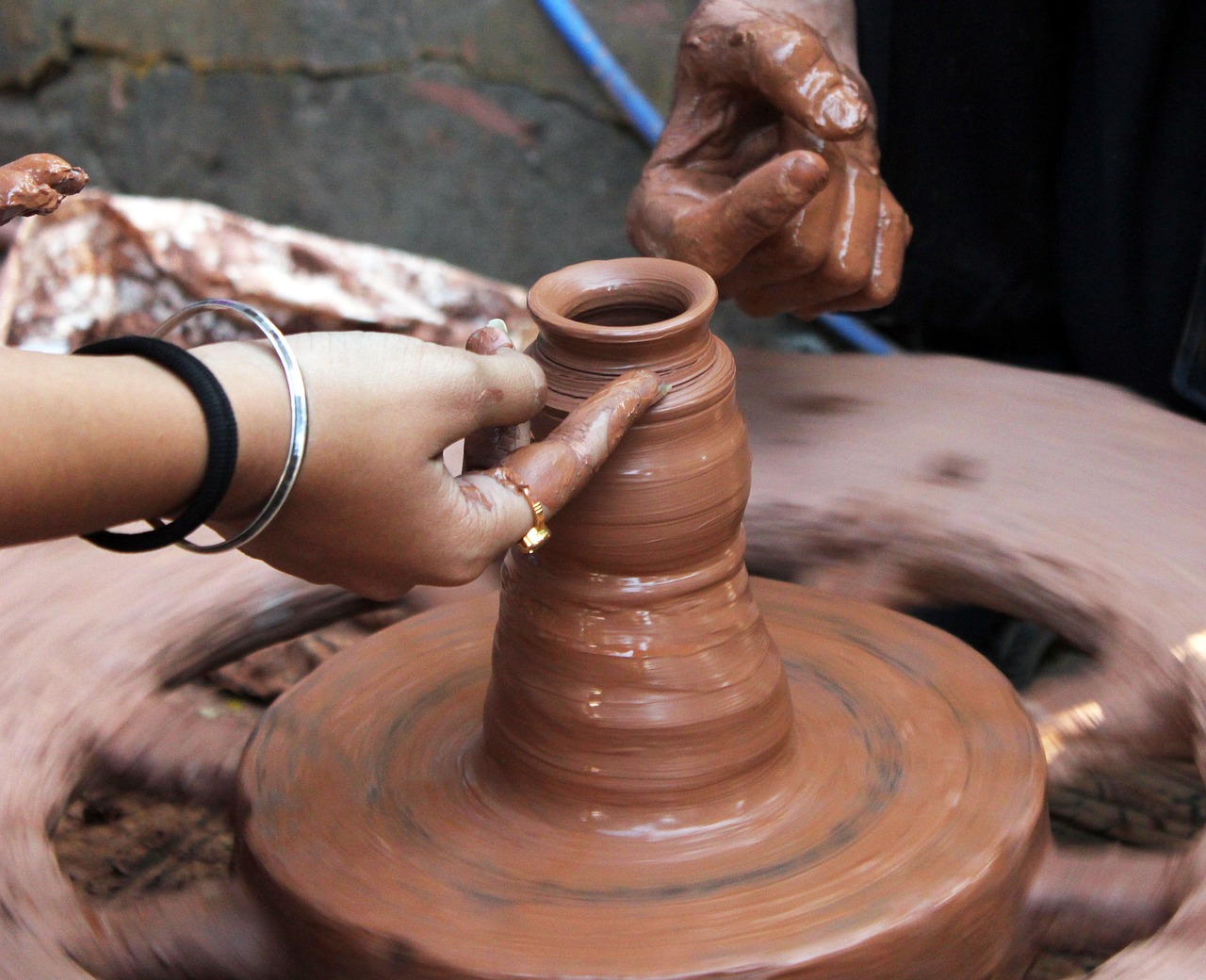
Earthenware
is one of the oldest types of clay used in pottery, boasting a rich history that dates back thousands of years. This clay is characterized by its porous nature and vibrant colors, making it a favorite among potters and artists alike. When you think of earthenware, picture the warm, earthy tones that evoke a sense of rustic charm and natural beauty. This type of clay is often used for both functional and decorative pottery, offering a delightful balance between practicality and aesthetics.
One of the most appealing aspects of earthenware is its ability to absorb glazes, which results in a stunning array of colors and finishes. The firing temperature for earthenware is relatively low, typically between 1,830°F and 2,200°F (1,000°C to 1,200°C), which contributes to its porous quality. This means that earthenware can be more susceptible to moisture, so it is generally not recommended for items that will be used for liquids unless they are properly glazed. However, this same property allows for a unique artistic expression that many potters cherish.
Earthenware is incredibly versatile and can be shaped into a variety of forms. From flower pots to ceramic tiles, the possibilities are endless. Here are some common uses for earthenware:
- Functional pottery such as dishes, bowls, and mugs
- Decorative items like vases and sculptures
- Garden pots and outdoor decorations
Not only is earthenware easy to work with, but it also allows for a wide range of decorative techniques. Potters often employ methods such as slip trailing, sgraffito, and underglazing to create intricate designs that enhance the clay's natural beauty. The tactile quality of earthenware also invites touch, making it an engaging medium for both the creator and the observer.
However, like any material, earthenware has its limitations. Its porous nature means that it can be more fragile than other types of clay, such as stoneware or porcelain. This fragility requires potters to handle their creations with care, especially during the drying and firing processes. Despite these challenges, many artisans find that the unique qualities of earthenware far outweigh any drawbacks, leading to stunning pieces that tell a story of their own.
In conclusion, earthenware is a beloved choice for both novice and experienced potters. Its rich colors, versatility, and historical significance make it a fundamental material in the world of ceramics. Whether you're sipping tea from a hand-thrown mug or admiring a beautifully glazed vase, the charm of earthenware is undeniable, inviting us to appreciate the artistry and craftsmanship that goes into every piece.
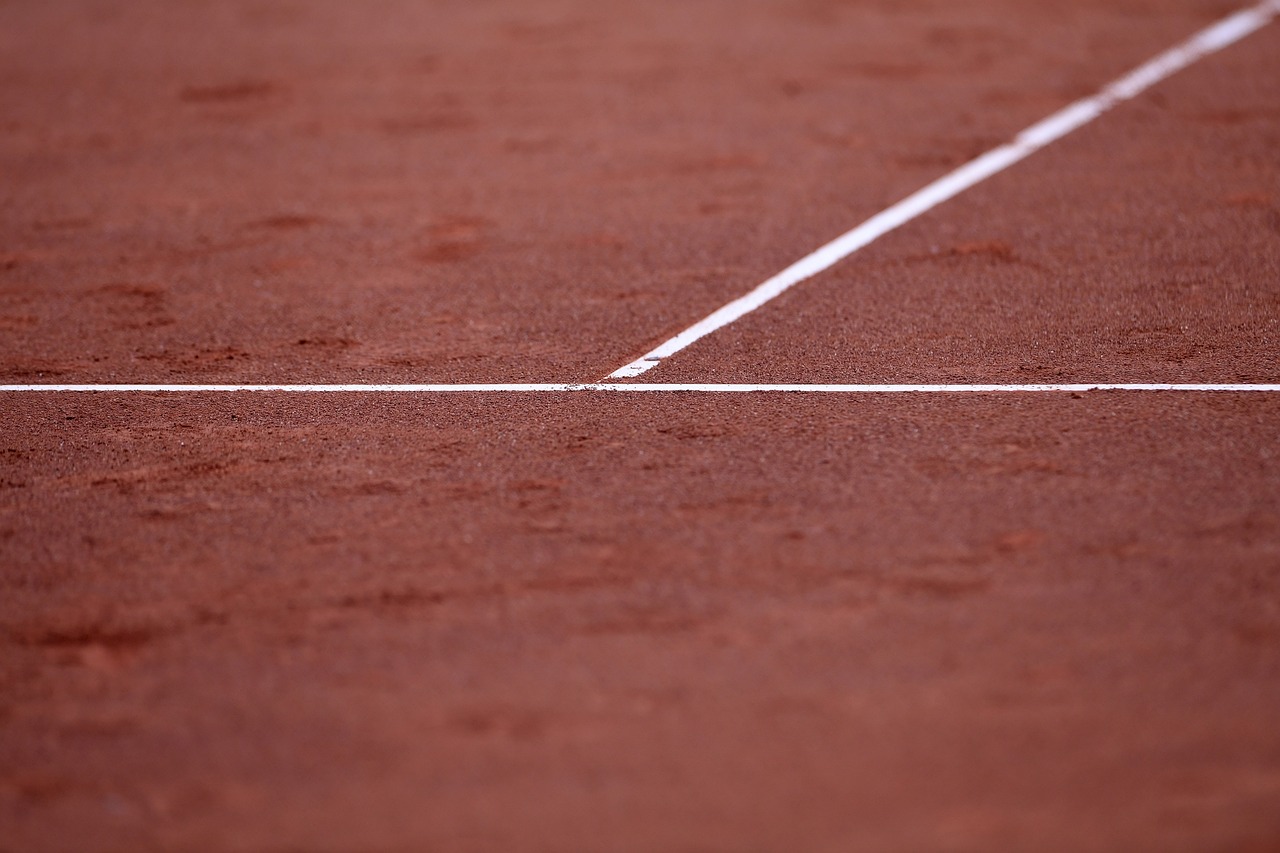
Stoneware
Stoneware is a remarkable type of clay that has been cherished by potters for centuries. Its durability and ability to withstand high temperatures make it a favorite among artisans who create functional pottery. When you think of stoneware, envision sturdy dishes and mugs that can endure the rigors of daily use, all while maintaining a unique aesthetic appeal. This clay is fired at temperatures typically ranging from 1200°C to 1300°C, which not only strengthens the final product but also gives it a distinctive, often glossy finish.
One of the fascinating aspects of stoneware is its dense composition. Unlike earthenware, which is porous and can absorb water, stoneware is non-porous after firing, making it ideal for items that need to hold liquids without leaking. This property allows potters to create everything from dinnerware to bakeware, proving its versatility in the kitchen. Imagine pulling a steaming casserole out of the oven, beautifully presented in a stoneware dish that has not only cooked your meal to perfection but also looks stunning on your dining table.
Another interesting feature of stoneware is its color variations. Depending on the minerals used in the clay body, stoneware can come in a range of earthy tones, from deep browns to soft greys. Potters often experiment with glazes to enhance these colors, creating pieces that are both functional and visually appealing. The glazing process can add a shiny surface that makes the pottery easy to clean, while also providing a layer of protection against scratches and stains.
For those looking to dive deeper into the world of stoneware, it's essential to understand the different stoneware clay bodies. Each type has its unique characteristics, which can affect the final outcome of the pottery. For example, some stoneware clays are more plastic, allowing for intricate designs, while others are denser, perfect for creating heavy-duty items. Understanding these variations is crucial for potters to select the right clay for their specific projects. Here’s a brief overview of some popular stoneware clay bodies:
| Clay Body | Texture | Color | Ideal Use |
|---|---|---|---|
| Standard Stoneware | Smooth | Buff to Brown | Dishes, Mugs |
| Rugged Stoneware | Textured | Dark Grey | Vases, Sculptures |
| High-Fire Stoneware | Dense | Varies | Functional Pottery |
In conclusion, stoneware is not just a clay; it's a canvas for creativity that offers both functionality and artistry. Whether you're a seasoned potter or a beginner, understanding the properties of stoneware can significantly enhance your pottery-making experience. So, the next time you reach for a mug or dish, take a moment to appreciate the craftsmanship and thought that went into creating that beautiful piece of stoneware.
- What is the difference between stoneware and earthenware? Stoneware is fired at a higher temperature, making it more durable and non-porous, while earthenware is more porous and typically fired at lower temperatures.
- Can stoneware go in the oven? Yes, stoneware is safe for oven use, but it's essential to check the manufacturer's guidelines to ensure it can withstand high temperatures.
- How do I care for my stoneware pottery? Stoneware is generally dishwasher safe, but hand washing is recommended to maintain its appearance. Avoid sudden temperature changes to prevent cracking.
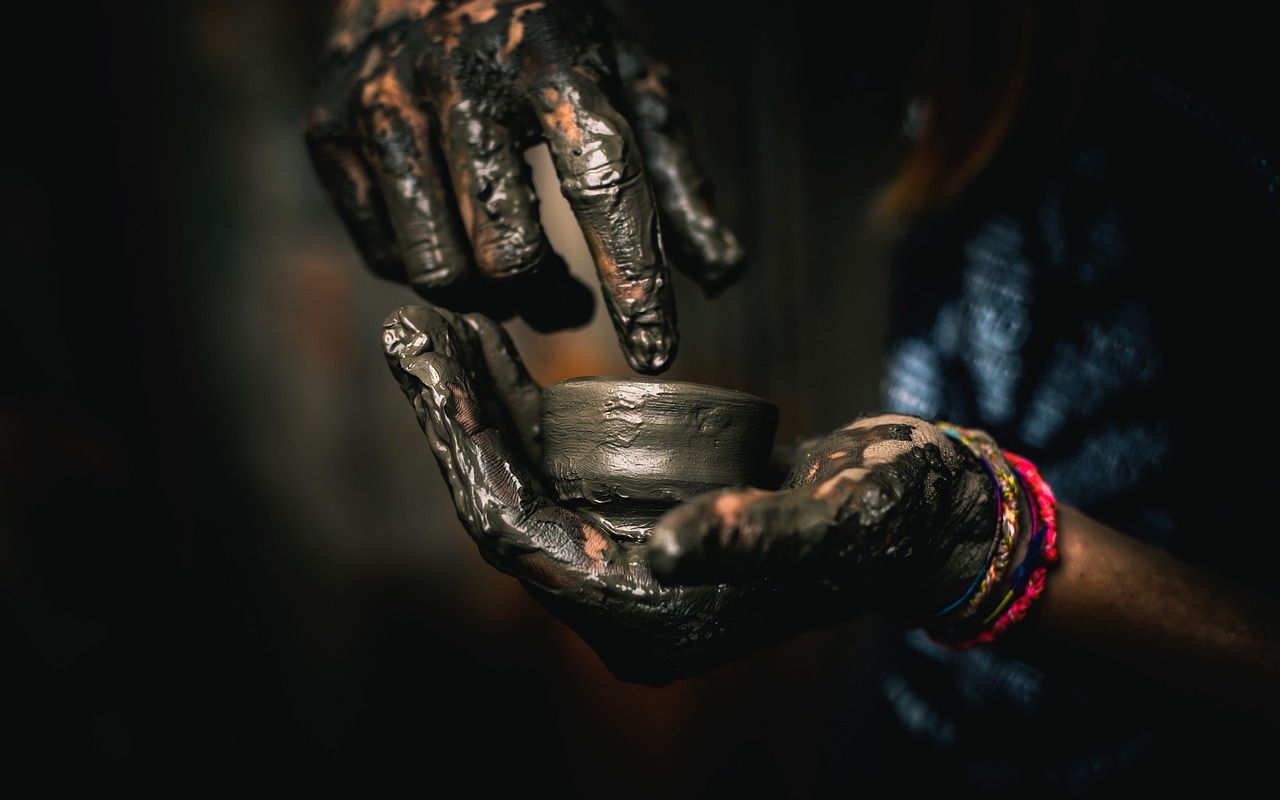
Porcelain
is often regarded as the pinnacle of ceramic artistry, a true testament to the skill and precision of potters. Known for its stunning whiteness and translucence, porcelain is a clay that stands out not just for its beauty but also for its remarkable strength. This unique clay is primarily composed of kaolin, a type of white clay, which is fired at extremely high temperatures, usually between 1200°C and 1400°C (2192°F to 2552°F). This high firing process not only enhances its durability but also contributes to its characteristic glass-like finish.
One of the most fascinating aspects of porcelain is its versatility. It can be molded into a variety of shapes and sizes, making it suitable for everything from delicate teacups and intricate figurines to robust dinnerware. The smooth, fine texture of porcelain allows for detailed designs and patterns, which can be achieved through various techniques such as painting, glazing, or even engraving. In fact, many artists and potters prefer porcelain because it can showcase their creativity and craftsmanship in ways that other clays cannot.
However, working with porcelain does come with its challenges. The clay is quite plastic, meaning it can be easily shaped, but it also requires a level of finesse and understanding of the material. Potters must be careful to avoid overworking the clay, as this can lead to cracks or deformities during the drying and firing processes. Additionally, the high firing temperature necessitates specialized kilns and careful temperature control, making porcelain pottery a labor of love that often requires years of practice to master.
Another interesting point to note is that porcelain is often categorized into different types based on its composition and firing temperature. Here’s a brief overview:
| Type of Porcelain | Description |
|---|---|
| Hard-paste Porcelain | This type is made from kaolin, feldspar, and quartz, fired at high temperatures, resulting in a strong and non-porous material. |
| Soft-paste Porcelain | Made from a mixture of clay and other materials like glass, this type is fired at lower temperatures and is more prone to chipping. |
| Bone China | A type of soft-paste porcelain that includes bone ash, giving it a distinctive white color and translucency, while also enhancing its strength. |
In conclusion, porcelain is not just a type of clay; it is an art form that has been cherished for centuries. Its unique properties allow artists to create stunning pieces that are both functional and decorative. Whether you’re sipping tea from a beautifully crafted cup or admiring a delicate porcelain figurine, you’re experiencing the magic of this remarkable material. So the next time you come across porcelain, take a moment to appreciate the skill and artistry that goes into every piece!
What is the difference between porcelain and stoneware?
Porcelain is fired at a higher temperature than stoneware, making it denser and more durable. It also has a finer texture and a more translucent appearance compared to stoneware.
Can porcelain be used in the microwave?
Yes, most porcelain is microwave-safe, but it's essential to check for any metallic decorations that may not be safe for microwave use.
How do I care for porcelain dishes?
Porcelain is generally dishwasher-safe, but hand washing is recommended for delicate pieces. Avoid using abrasive cleaners to maintain their finish.
Is porcelain more expensive than other types of clay?
Typically, yes. The high-quality materials and intricate craftsmanship involved in making porcelain often result in a higher price point compared to other types of pottery.
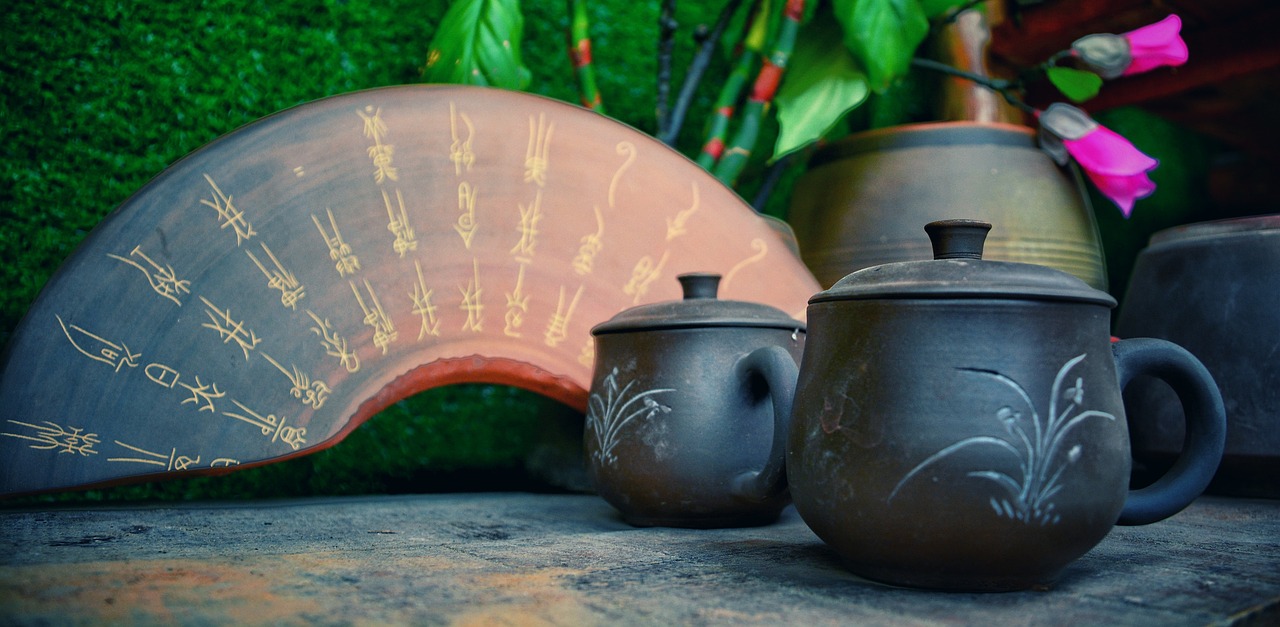
Ball Clay
Ball clay is a fascinating type of clay that potters cherish for its versatility and plasticity. This clay is typically a fine-grained, highly plastic material that is often used in combination with other clays to enhance their workability. Think of ball clay as the secret ingredient in a recipe that makes everything come together seamlessly. Its unique properties allow it to be shaped easily, making it a favorite among potters aiming for intricate designs.
One of the standout features of ball clay is its ability to improve the malleability of other clay bodies. When mixed with stoneware or porcelain, it not only makes the clay easier to work with but also contributes to the final product's strength and durability. This is crucial, especially when creating thin-walled or delicate pieces that require a little extra support during the shaping process. Imagine trying to build a sandcastle with dry sand versus wet sand; ball clay acts like that moisture, helping everything hold together.
Ball clay is also known for its fine particle size, which allows it to be easily incorporated into various clay mixtures. This fine texture helps in achieving a smooth finish on pottery, reducing the chances of cracks or defects in the final piece. Moreover, when fired, ball clay can enhance the color and surface quality of the pottery, giving it a refined look that many artists strive for.
Interestingly, ball clay is not just about improving the workability of other clays; it also plays a significant role in the production of ceramic bodies. It's often used in the production of porcelain, where it helps to create that beautiful translucence and strength that porcelain is known for. Additionally, ball clay is a key ingredient in many stoneware formulations, allowing for a wide range of textures and colors in the final products.
In terms of sourcing, ball clay is typically found in sedimentary deposits, and its extraction can be quite labor-intensive. However, the end results are often worth the effort, as the clay can be used for a variety of applications, from functional tableware to artistic sculptures. Potters often appreciate having a reliable supply of ball clay in their studios, as it opens up a world of creative possibilities.
In summary, ball clay is an essential component in the pottery world. Its ability to enhance the properties of other clays, combined with its unique characteristics, makes it a go-to choice for many potters. Whether you're a beginner or a seasoned ceramic artist, understanding the role of ball clay can significantly impact your work and the outcomes of your projects.
- What is ball clay used for? Ball clay is primarily used to improve the plasticity and workability of other clays, making it ideal for porcelain and stoneware.
- Can ball clay be used alone? While it can be used alone, it is most effective when mixed with other clays to enhance their characteristics.
- How does ball clay affect the firing process? Ball clay can influence the color and texture of the final piece, often resulting in a smoother finish and increased durability.
- Where can I find ball clay? Ball clay is sourced from specific sedimentary deposits, and many pottery supply stores carry it.
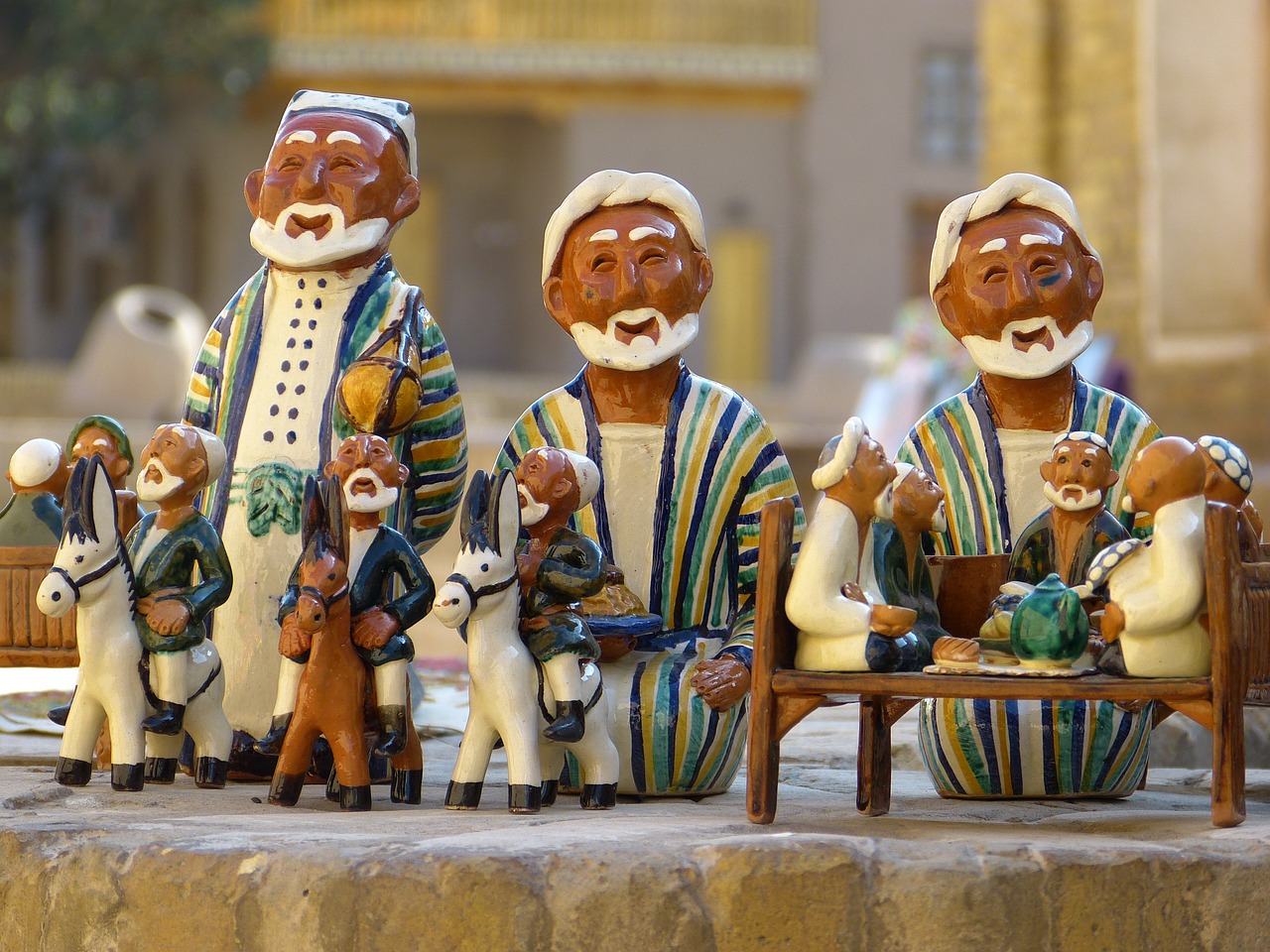
Fire Clay
is a remarkable type of clay that stands out due to its exceptional ability to withstand high temperatures. This clay is not just any ordinary material; it is specifically designed for applications that require durability and resistance to extreme heat. Imagine a superhero of the clay world, capable of enduring the fiery depths of a kiln without breaking a sweat! Fire clay is primarily used in the making of kiln linings and refractory materials, which are essential for potters who wish to create stunning ceramic pieces without the fear of damaging their equipment.
One of the most fascinating aspects of fire clay is its composition. It typically contains a higher percentage of alumina, which contributes to its heat-resistant properties. This makes it an invaluable resource for potters and ceramic artists alike. When you think about it, fire clay is like the unsung hero in the pottery process—often overlooked but absolutely crucial for achieving those perfect results. Without it, many pottery creations would simply not stand the test of time or temperature.
Furthermore, fire clay can be mixed with other types of clay to enhance its properties. This blending process allows potters to customize their clay bodies, tailoring them to specific projects. For instance, when mixed with stoneware or porcelain, fire clay can improve the overall strength and thermal shock resistance of the final product. It’s like adding a secret ingredient to your favorite recipe—just a little can make a world of difference!
In terms of texture, fire clay is often gritty and coarse, which can provide a unique aesthetic to finished pieces. This texture can be particularly appealing in sculptural works, where the tactile quality of the clay plays a significant role in the overall design. Moreover, fire clay is typically available in various colors, ranging from light tan to deep brown, allowing artists to choose a hue that best fits their creative vision.
To sum it up, fire clay is an essential component in the world of pottery, offering both functionality and creative possibilities. Its ability to withstand high temperatures makes it indispensable for kiln construction and ceramic production. So, the next time you admire a beautifully crafted pottery piece, remember the silent strength of fire clay that made it all possible!
- What is fire clay used for? Fire clay is primarily used for making kiln linings and refractory materials, as well as for blending with other clays to enhance their properties.
- Can fire clay be used for functional pottery? Yes, while fire clay is often used in kiln construction, it can also be blended with other clays to create functional pottery that can withstand high temperatures.
- How does fire clay differ from other types of clay? Fire clay has a higher alumina content, making it more heat-resistant compared to other clays like earthenware or stoneware.
- Is fire clay suitable for beginners? While fire clay can be more challenging to work with due to its gritty texture, beginners can certainly explore its use, especially when mixed with more plastic clays.
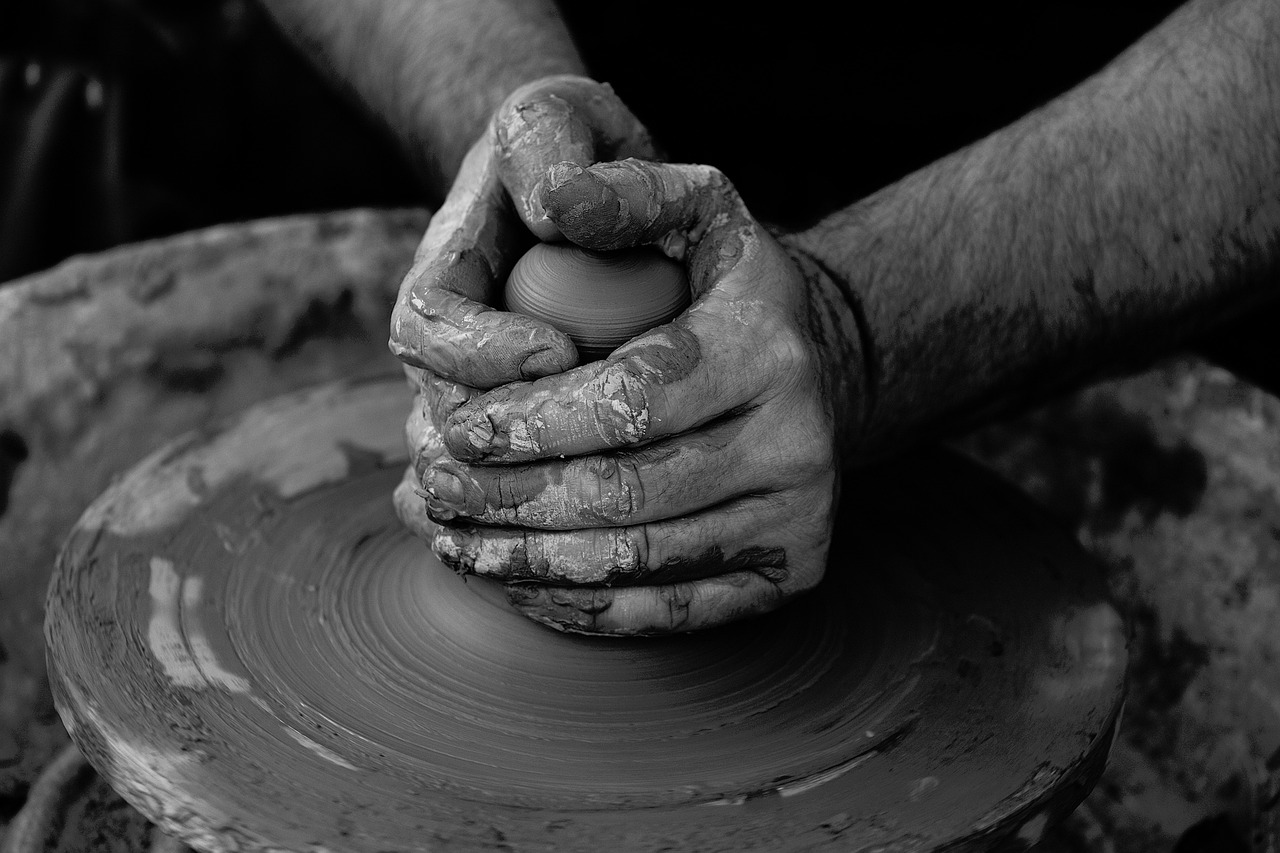
Terracotta
is a fascinating type of earthenware clay that boasts a distinct reddish-brown color, which is a direct result of its iron content. This clay is not just a pretty face; it has been used for centuries in various cultures around the world, making it a staple in both functional and decorative pottery. Imagine walking through an ancient marketplace and seeing vibrant terracotta pots, sculptures, and tiles that have stood the test of time—there’s something truly magical about that!
One of the most appealing aspects of terracotta is its versatility. Whether you’re crafting a beautiful garden pot or an intricate sculpture, terracotta provides a rustic charm that’s hard to replicate. Its porous nature allows it to breathe, which means it can regulate moisture—perfect for plant pots! However, this same porous quality also means that terracotta is more prone to cracking compared to other types of clay, especially if not properly glazed or fired. So, if you’re planning to use terracotta for outdoor projects, it’s essential to consider how it will hold up against the elements.
When it comes to firing, terracotta is typically fired at lower temperatures compared to stoneware and porcelain, usually around 1,800 to 2,000 degrees Fahrenheit. This lower firing range contributes to its characteristic softness and workability, making it an excellent choice for beginners and seasoned potters alike. Plus, the firing process enhances its color, giving it that warm, earthy tone that many artisans and collectors adore.
In terms of applications, terracotta can be found in various forms:
- Garden Pots: Perfect for planting flowers and herbs, terracotta pots allow for excellent drainage and aeration.
- Sculptures: Artists love using terracotta for its malleability, allowing for intricate designs and textures.
- Tiles: Terracotta tiles have been used for flooring and roofing in many historical buildings, adding a rustic aesthetic.
- Tableware: While not as common as stoneware or porcelain, terracotta can also be used for dishes and bowls, giving a unique flair to dining experiences.
Moreover, terracotta's ability to absorb and retain heat makes it an excellent choice for cooking vessels, particularly in traditional cuisines where slow cooking is essential. Think about those rich, flavorful stews that simmer for hours in a terracotta pot—delicious, right?
In conclusion, terracotta is more than just clay; it’s a connection to history, culture, and artistry. Whether you’re a potter looking to experiment with this medium or a collector seeking unique pieces, terracotta offers a world of possibilities that can enhance your creative journey.
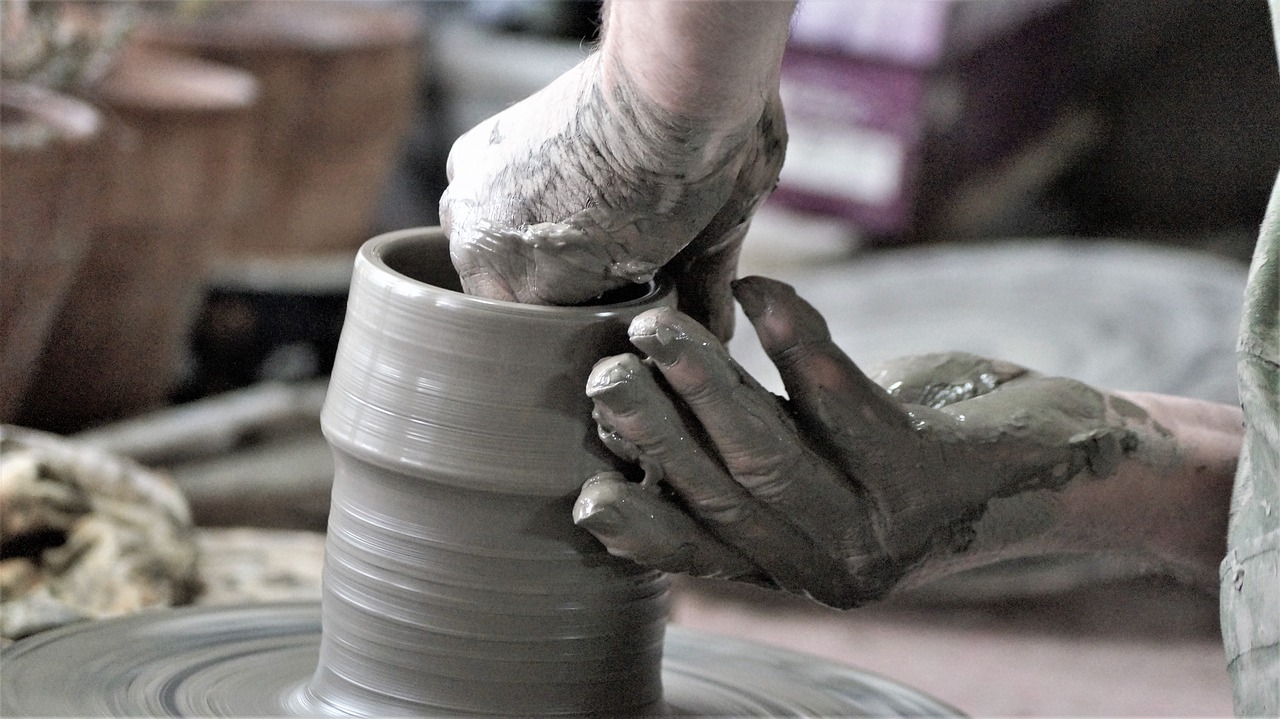
Raku Clay
Raku clay is truly a fascinating material in the world of pottery, specifically designed for the unique raku firing process. This technique is not just about shaping clay; it’s an exhilarating journey that involves removing the pottery from the kiln while it’s still glowing hot, and then placing it into combustible materials. The result? A stunning array of colors and textures that can’t be achieved through traditional firing methods. Imagine pulling your creation from the fire and watching it transform right before your eyes! It’s like magic, but it’s all science and art combined.
One of the most remarkable features of raku clay is its ability to withstand thermal shock. This means that it can handle the dramatic temperature changes that occur during the raku firing process. The clay is often formulated with a higher percentage of grog, which is pre-fired clay that adds strength and reduces shrinkage. This makes raku clay not only versatile but also resilient, allowing artists to push the boundaries of their creativity.
When working with raku clay, potters often find themselves experimenting with various techniques and finishes. The glazes used in raku can produce vibrant, metallic finishes, and the post-firing reduction process can create crackle effects that add character and depth to each piece. Artists might use a variety of combustible materials, such as sawdust or newspaper, which can yield different results, making each raku piece a unique work of art. It’s a bit like cooking; the ingredients you choose can completely change the final dish!
However, it’s important to note that raku pottery is not typically food-safe due to the porous nature of the clay and the glazes used. Therefore, while raku pieces can be stunning centerpieces or decorative items, they are best suited for display rather than everyday use. This limitation can actually spark creativity, as potters are encouraged to think outside the box and create pieces that serve as conversation starters rather than functional items.
In summary, raku clay is a thrilling medium that offers potters a chance to explore the intersection of art and science. Its unique properties and the dynamic firing process make every piece a surprise, a little explosion of creativity that reflects the artist's vision. Whether you’re an experienced potter or just starting out, experimenting with raku clay can be an exhilarating experience that brings a whole new dimension to your pottery practice.
- What is raku firing? Raku firing is a unique pottery technique where pieces are removed from the kiln while hot and placed in combustible materials to create distinctive surface effects.
- Can raku pottery be used for food? Generally, raku pottery is not food-safe due to its porous nature and the types of glazes used, making it more suitable for decorative purposes.
- What is the difference between raku clay and other types of clay? Raku clay is specifically formulated to withstand thermal shock during the raku firing process, unlike many other clays that may not endure such extreme temperature changes.
- How do I care for raku pottery? Raku pottery should be handled with care and kept dry, as its porous nature can absorb moisture and lead to damage.
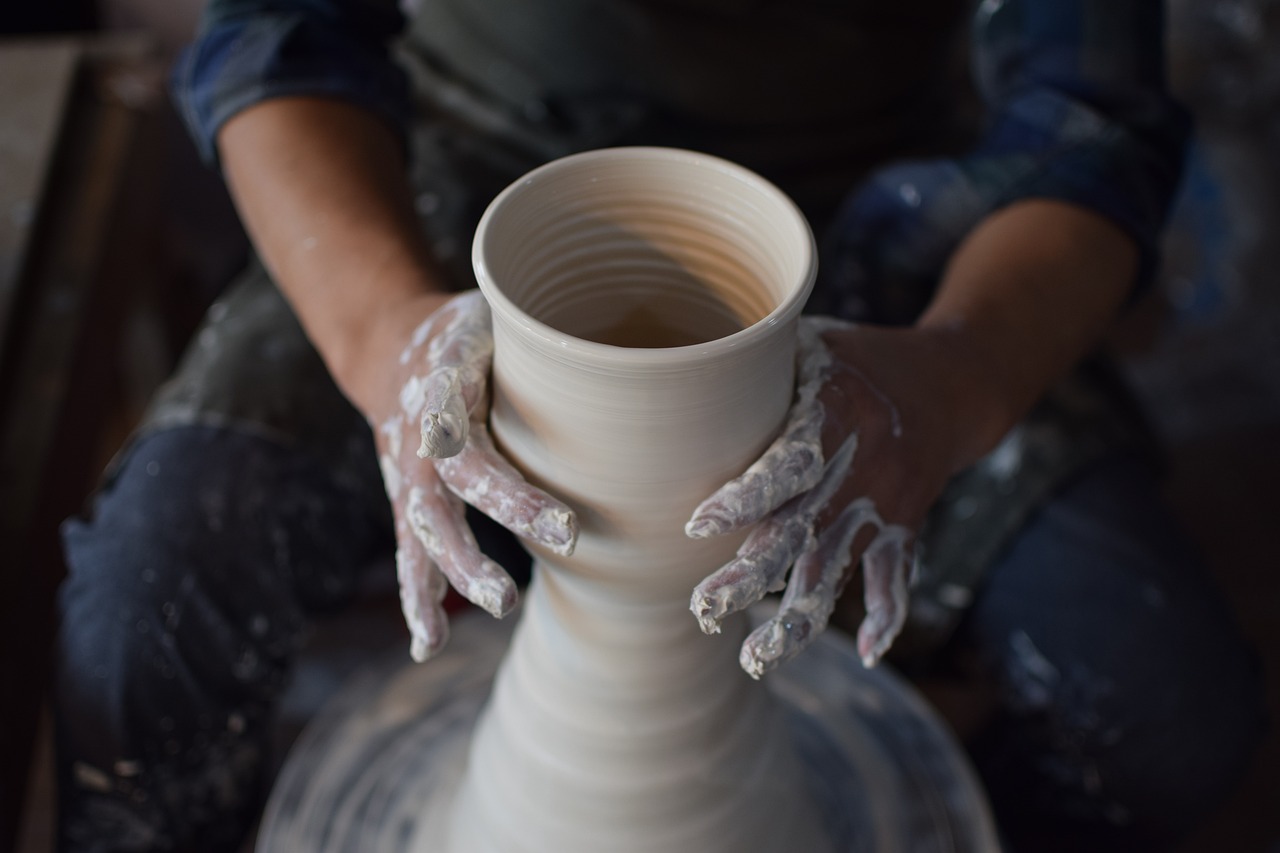
Paper Clay
When it comes to pottery, stands out as a truly innovative material. This unique blend of traditional clay and cellulose fibers offers potters a whole new world of possibilities. Imagine being able to create sculptures that are not only lightweight but also incredibly strong! That's the magic of paper clay. It’s like having a trusty sidekick in your pottery adventures, giving you the flexibility to push your creative boundaries.
One of the most remarkable features of paper clay is its enhanced workability. The addition of cellulose fibers makes the clay more forgiving, allowing you to easily shape and mold it without the fear of cracking. This is especially beneficial for intricate designs or delicate pieces that require a gentle touch. Plus, if you’ve ever faced the frustration of a cracked sculpture, you’ll appreciate how paper clay can be used to repair those pesky breaks seamlessly. It’s like having a magic glue that blends right in!
Another advantage of paper clay is its lightweight nature. This characteristic is particularly advantageous for larger sculptures and installations. Artists can create impressive pieces without the worry of excessive weight, making transportation and display much easier. You can think of it as the difference between carrying a feather and a brick – both can be beautiful, but one is just a lot easier to handle!
In addition to its practical benefits, paper clay also opens up new avenues for artistic expression. The texture and finish can vary significantly depending on the proportions of clay to paper fibers used. Some artists love to experiment with different ratios to achieve unique effects. For instance, a higher percentage of paper might yield a more porous and textured finish, while a lower percentage could result in a smoother surface. This flexibility allows potters to tailor their creations to match their artistic vision.
However, working with paper clay does come with its own set of challenges. For instance, the drying time can be different compared to traditional clays, requiring potters to adjust their techniques accordingly. It’s essential to monitor the drying process closely to avoid any unwanted surprises, like warping or cracking. But don’t let that deter you! With a little practice and patience, the rewards are well worth the effort.
So, whether you’re a seasoned potter or just starting out, consider giving paper clay a try. It’s an exciting material that can elevate your pottery game to new heights. Embrace the adventure, and who knows? You might just create your next masterpiece!
- What is paper clay made of?
Paper clay is a mixture of clay and cellulose fibers, which can be derived from recycled paper or other plant materials. - Can paper clay be used for functional pottery?
Yes, paper clay can be used for functional pottery, but it is essential to ensure that the final piece is properly fired to achieve durability. - How do I store paper clay?
Store paper clay in an airtight container to prevent it from drying out. If it does dry out, you can rehydrate it by adding a bit of water. - Can I mix paper clay with other types of clay?
Absolutely! Many potters combine paper clay with other clays to enhance their properties and achieve desired effects.
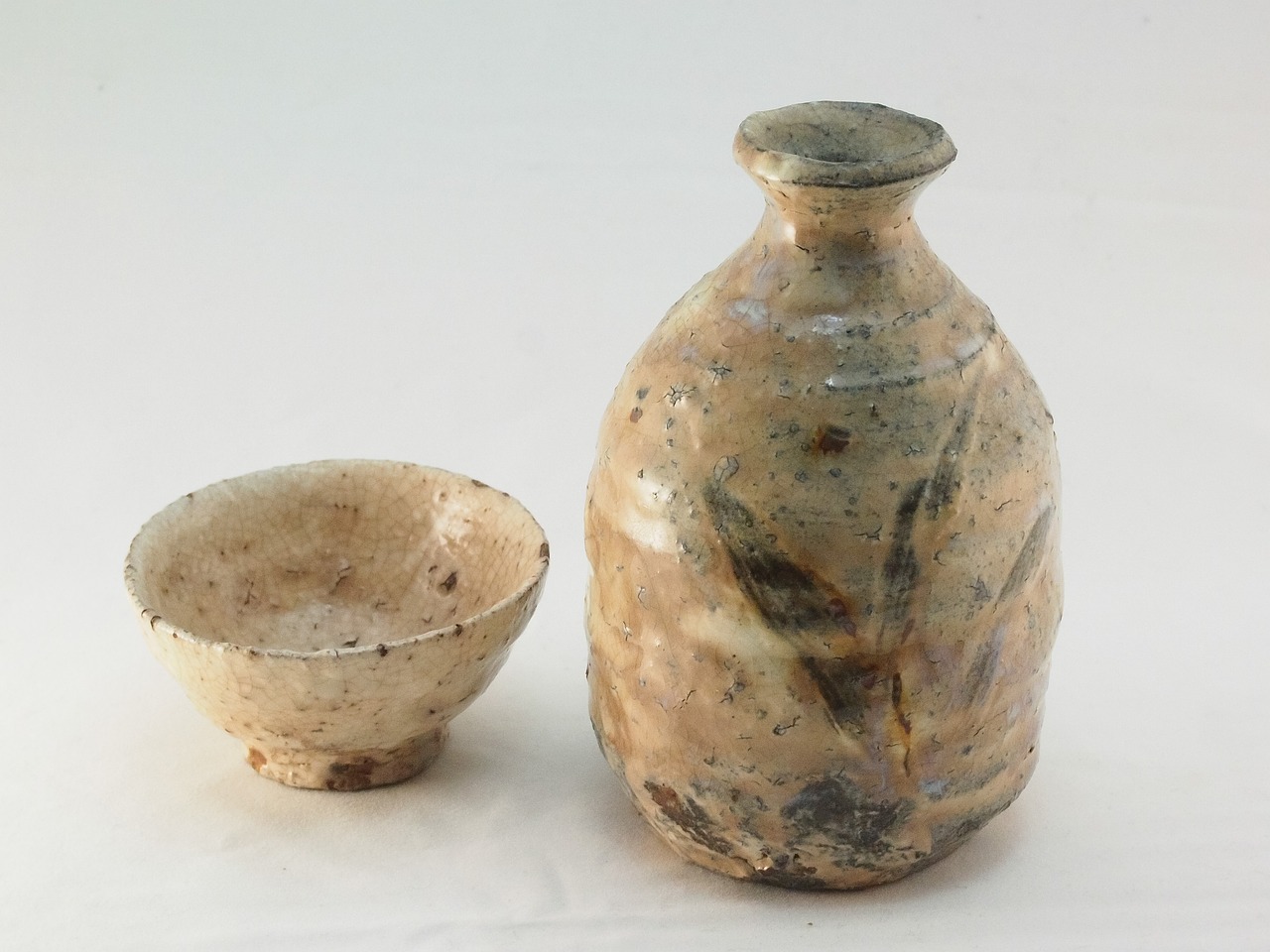
Stoneware Clay Bodies
When it comes to , the diversity is truly fascinating. Each type of stoneware clay has its unique characteristics, influencing both the functionality and aesthetic appeal of the finished piece. Stoneware is typically fired at high temperatures, which not only makes it durable but also imparts a rich texture and color to the final product. The variations in stoneware can be attributed to the specific minerals and additives used in the clay body, which can significantly alter its properties.
For potters, understanding the different stoneware clay bodies is crucial. It’s like choosing the right paint for a masterpiece; the choice of clay can enhance or detract from the final work. Here’s a quick overview of some common types of stoneware clay bodies:
| Clay Body | Texture | Color | Common Uses |
|---|---|---|---|
| Standard Stoneware | Medium | Gray to Brown | Dishes, Mugs |
| Porcelain Stoneware | Fine | White | High-end Pottery |
| Raku Stoneware | Coarse | Varied | Sculptures, Decorative Items |
| Red Stoneware | Rough | Red to Brown | Garden Pots, Outdoor Sculptures |
Each stoneware clay body can be tailored for specific projects. For instance, if you’re aiming for a rustic look, red stoneware might be the way to go. Its earthy tones and rough texture can really bring out the natural beauty of outdoor pieces. On the other hand, if you’re looking for something sleek and modern, porcelain stoneware offers a refined finish that can elevate any dining experience.
Moreover, potters often experiment by blending different stoneware clay bodies to achieve unique textures and colors. This creative process is akin to a chef mixing ingredients to craft a signature dish. The result? A piece that not only serves a practical purpose but also tells a story through its materiality.
In conclusion, the world of stoneware clay bodies is rich and varied. By understanding the properties and potential of each type, potters can make informed choices that enhance their work. Whether you’re a seasoned artisan or just starting your pottery journey, delving into the nuances of stoneware can open up a whole new realm of creative possibilities.
- What is the best stoneware clay for beginners?
Standard stoneware is often recommended for beginners due to its forgiving nature and versatility.
- Can I mix different stoneware clays?
Yes, blending different stoneware clays can create unique textures and colors, but be mindful of their firing temperatures.
- What temperature is stoneware fired at?
Stoneware is typically fired at temperatures ranging from 2100°F to 2400°F (1150°C to 1300°C).
- Is stoneware safe for food use?
Absolutely! Most stoneware is food safe, but always check for any glazes that may not be suitable.
Frequently Asked Questions
- What is the best type of clay for beginners?
For beginners, earthenware is often recommended due to its workability and availability. It's forgiving and allows for vibrant glazing, making it an excellent choice for those just starting out in pottery.
- Can I use different types of clay together?
Yes, you can mix different types of clay, but it’s essential to consider their firing temperatures and shrinkage rates. Ball clay is often used to enhance the plasticity of other clays, making it a great choice for blending.
- What is the difference between stoneware and porcelain?
Stoneware is more durable and fired at high temperatures, making it ideal for functional pottery. In contrast, porcelain is finer, more translucent, and requires precise techniques, often used for decorative or high-end items.
- Is terracotta suitable for outdoor use?
Absolutely! Terracotta is often used for garden pots and sculptures due to its rustic appearance. However, keep in mind that it can be porous, so it’s best to protect it during harsh weather conditions.
- What is raku firing and how does it affect clay?
Raku firing is a unique technique where pottery is removed from the kiln while hot and placed in combustible materials. This process creates distinctive surface effects and colors, making it a favorite among artists looking for unique finishes.
- Can I repair broken pottery with paper clay?
Yes! Paper clay is excellent for repairs due to its enhanced flexibility and strength. It can bond well with existing clay, making it a fantastic option for restoring broken pieces.
- What are the benefits of using fire clay?
Fire clay is highly resistant to extreme temperatures, making it ideal for kiln linings and refractory materials. Its durability ensures that it can withstand the intense heat of firing processes, which is crucial for successful pottery making.
- How do I choose the right clay for my project?
Choosing the right clay depends on your project goals. Consider factors like firing temperature, desired finish, and functionality. Researching the properties of each clay type will guide you in selecting the best option for your specific needs.



















